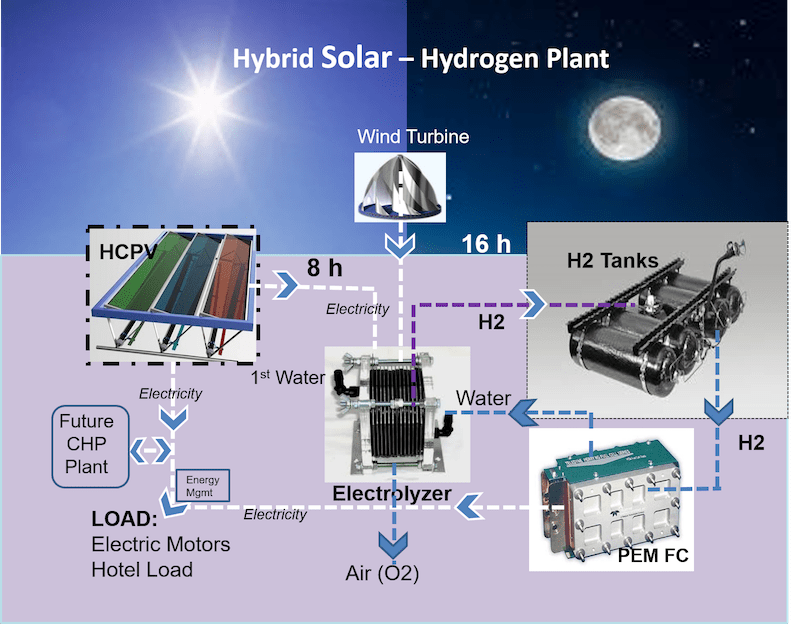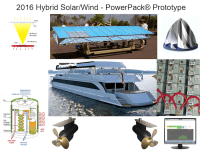The shipping industry’s carbon dioxide emissions are not covered by the 1997 Kyoto Protocol or not included in the commitments of the climate target of the 2015 United Nations Climate Change Conference; despite being identified in several Studies to have grown by 75% in the last 15 years, significant since 90% of the worlds goods are being carried by sea. The CO2 emissions from shipping are double those of aviation (on target for 25% reduction by 2020). The Maritime Industry appears to have no strategy for reducing emissions which currently represents 5% of the global total – more than all of African countries emissions combined.
By using High Concentrating Photovoltaic (HCPV) solar with 2-Axis Tracking to generate electricity from solar cells at 1000x magnification of sunlight (60% improvement over PV), along with a Combined Heat and Power (CHP) converting the HCPV “waste heat” to electricity – sufficient energy can be generated to perpetually power vessels between 100- and 500-ton traveling at an average speed of 11 knots (HJA Solutions’ entry was a finalist in the Innovation category of the 2016 Lloyd’s Lists Competition).
For ships in the next class using HCPV solar with 2-Axis tracking generating electricity to run a Hydrogen Plant which uses fuel-free water electrolyzed converted into H2 gas, stored in high pressure tanks which in turn runs a Proton Exchange Membrane Fuel Cells (best suited for motive use) providing electricity for mobility. The last decade has seen substantial progress in H2 Plants (Energizer, H2 High Pressure Storage and Fuel Cells). The combined HCPV and H2 Plant – will generate sufficient power for ships between 500- and 1,000-ton class traveling at an average speed of 11 knots.
By using a Trigeneration propulsion system combining HCPV solar with 2-Axis tracking, H2- Plant and a CHP Plant our calculation indicates that sufficient power can be produced for ships between 1,000- and 5,000-ton.
For larger ships, it is clear that Nuclear propulsion is needed (small nuclear reactors are defined as up to 300MWe and medium nuclear reactors between 300- and 700MWe) the latter is suitable for ships up to 100,000-tons. The development of Maritime Commercial Nuclear propulsion has been dominated by Russia (formerly USSR) since 1954 with 262 nuclear ships built, with Russian reactors over time have evolved to 4th Generation technology, now powering submarines, ice breakers, surface combatants and eight operating commercial ships between 40,000- and 75,000-ton. The U.S. has concentrated on nuclear reactors for the navy’s submarines and surface combatants with nuclear propulsion for commercial ships have been missing since Savanah (1958-1962), which was seen as unsuccessful (not attributed to nuclear propulsion).
Today, the time is ripe for a renaissance in maritime nuclear propulsion as clean energy is becoming paramount, and commercial ships are rapidly becoming transportation’s biggest polluter. Lloyd's Register has investigated the possibility of civilian nuclear marine propulsion and concluded that the Western World would need to rewrite the nuclear regulations to make the new safer small and medium nuclear reactors for propulsion technically and financially viable.
Like this entry?
-
About the Entrant
- Name:Henning Jacobsen
- Type of entry:individual
- Software used for this entry:Excel
- Patent status:none





